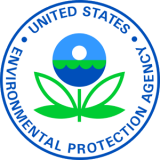EPA Takes Action to Address Risks to Public Health by Adding Cherokee Zinc-Weir Smelter Superfund Site to National Priorities List

LENEXA, KAN. (Sept. 8, 2021) - Today, the U.S. Environmental Protection Agency (EPA) announced that it is adding four sites to the National Priorities List (NPL), including the Cherokee Zinc-Weir Smelter Superfund site in Weir, Kansas, where releases of contamination pose significant human health and environmental risks.
EPA is also proposing to add another 13 sites and is withdrawing a previously proposed site, following the Agency’s science-based determination that placing the site on the NPL is not needed to protect human health and the environment.
With this Superfund NPL update, the Biden-Harris Administration is demonstrating a commitment to updating the NPL twice a year. By pledging to add sites more regularly to the NPL, EPA is taking action to protect the health of communities across the country, while cleaning up and returning blighted properties to safe and productive reuse in areas where environmental cleanup and jobs are needed most.
“EPA recognizes that no community deserves to have contaminated sites near where they live, work, pray, and go to school. By adding sites to the Superfund NPL, we are helping to ensure that more communities living near the nation’s most serious uncontrolled or abandoned releases of contamination have the protection they deserve,” said EPA Administrator Michael S. Regan. “The Biden-Harris Administration is committed to increasing funding and working with Congress on the bipartisan infrastructure deal to provide the Superfund Program with the resources it needs to address a backlog of sites awaiting cleanup, as well as additional sites in need of cleanup.”
“Exposure to lead contamination presents serious health risks, especially for children, our most vulnerable population,” said Acting EPA Region 7 Administrator Edward H. Chu. “By adding the Cherokee Zinc-Weir Smelter Superfund Site to the National Priorities List, EPA will ensure that those living and working in the Weir community are protected from dangerous lead exposure.”
The Cherokee Zinc-Weir Smelter Site is located on the north side of the city of Weir, Cherokee County, Kansas, in the Arkansas-White-Red Region watershed. The Chicago Zinc Works began smelting zinc in 1873 and chose Weir as its location, due to nearby commercial coal deposits available to fuel the smelter and to the proximity to the Tri-State lead and zinc mining district. According to historical information, smelting operations closed in approximately 1918 when natural gas wells in other areas of Kansas made smelter operations using coal less profitable.
Between 2004 and 2013, the Kansas Department of Health and Environment (KDHE) conducted soil testing at the former smelter as well as nearby properties. Lead was identified as the primary contaminant of concern. This sampling identified several properties with elevated lead levels, and KDHE requested EPA to further evaluate residential lead contamination in Weir associated with the former Cherokee Zinc smelter. These investigations have identified elevated levels of lead in residential yards in Weir that appear to be attributable to the former Cherokee Zinc smelter.
To date, the EPA Removal Program has cleaned up 31 properties with lead above the Removal Management Levels. The removal assessment also concluded that soil, sediment, and surface water were likely contaminated with lead, arsenic, cadmium, and possibly selenium on or adjacent to the former smelter property. All short-term threats where known lead contamination poses a threat to the residents of Weir are being addressed by the removal action.
Background
The National Priorities List (NPL) includes the nation’s most serious uncontrolled or abandoned releases of contamination. The list serves as the basis for prioritizing EPA Superfund cleanup funding and enforcement actions. Only releases at sites included on the NPL are eligible to receive federal funding for long-term, permanent cleanup.
EPA proposes adding sites to the NPL based on a scientific determination of risks to people and the environment, consistent with the Comprehensive Environmental Response, Compensation, and Liability Act and the National Oil and Hazardous Substances Pollution Contingency Plan.
Superfund cleanups provide health and economic benefits to communities. The program is credited for significant reductions in both birth defects and blood lead levels among children living near sites, and research has shown residential property values increase up to 24% within 3 miles of sites after cleanup.
Further, thanks to Superfund cleanups, communities are now using previously blighted properties for a wide range of purposes, including retail businesses, office space, public parks, residences, warehouses, and solar power generation. As of 2020, EPA has collected economic data on 632 Superfund sites, finding 9,900 businesses in operation, 227,000 people employed, $16.3 billion in employee-earned income, and $63.3 billion in business-generated sales.
Learn more about Superfund and the NPL.
For Federal Register notices and supporting documents for NPL and proposed sites, please visit EPA’s website.
# # #
Learn more about EPA Region 7
View all Region 7 news releases
Connect with EPA Region 7 on Facebook: www.facebook.com/eparegion7
Follow us on Twitter: @EPARegion7
